Deep fog over markets
Even when markets are calm and economic conditions appear to be benign, thoughts about possible threats to clients’ portfolios are never far. This vigilance stems from experience of events in one corner of capital markets having profound ramifications for asset prices in other parts of the world.
Think back to the Global Financial Crisis when stresses in subprime US real estate mortgages set off a terrible chain of events, or early in 2020 when an obscure virus in China crossed borders creating shocks everywhere.
At this time, the upturning of the post WWII trade and economic architecture, created by the United States, and epitomised by the torpedoing of the liberal trading regime, dominates investor preoccupations (Chart 1) because it represents the ending of a decades-long status quo with little certainty about what may come next.
Chart 1: US trade policy shifts are preoccupying American investors …
Economic Policy Uncertainty Index monthly (2020 –2025)*
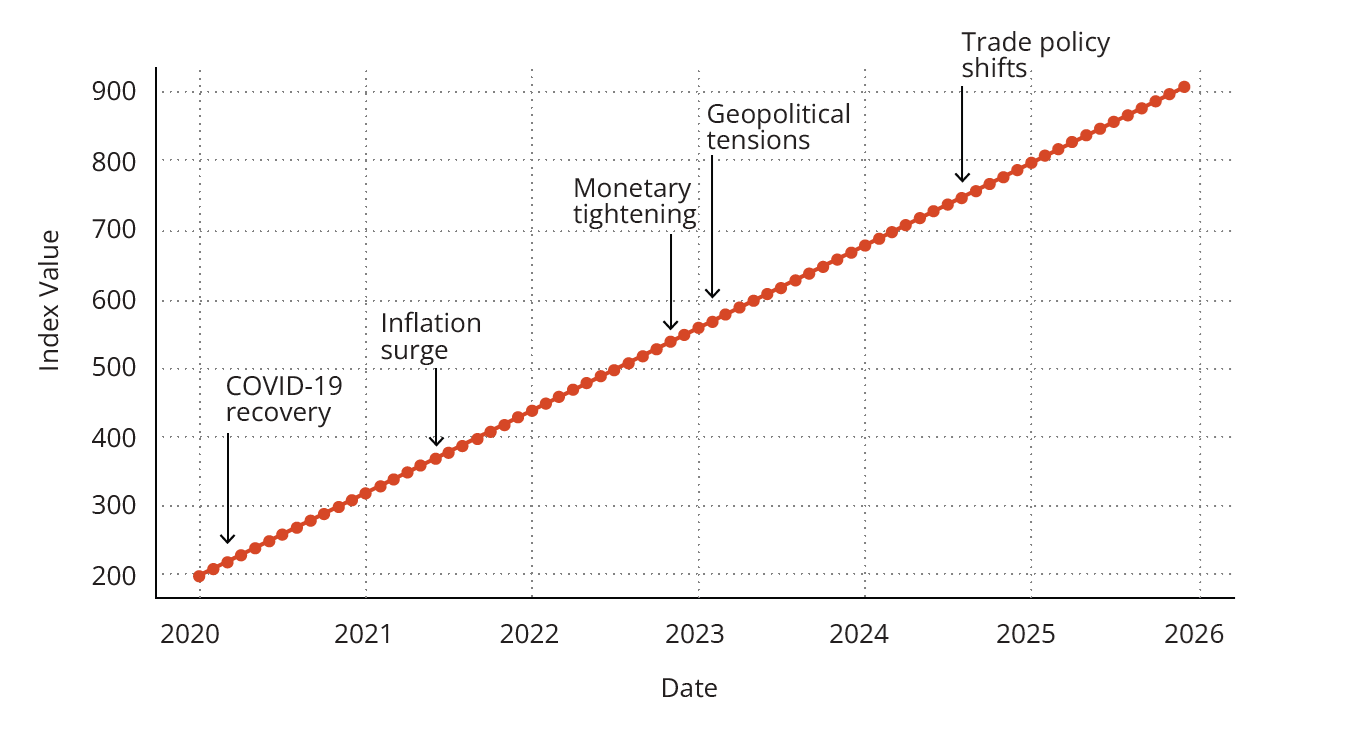
*The chart displays the value of the topic with the highest uncertainty index value for the month among US investors. Source: Macrobond
It’s not just investors who are consumed by shifts in US trade policy and the knock-on effects this is having: there’s been a spike in American business chiefs mentioning ‘tariffs’ during earnings calls (Chart 2).
It is the issue du jour and its gravitational pull is impossible to escape.
Chart 2: … and corporate leaders too
‘Tariffs’ mentioned on earnings calls
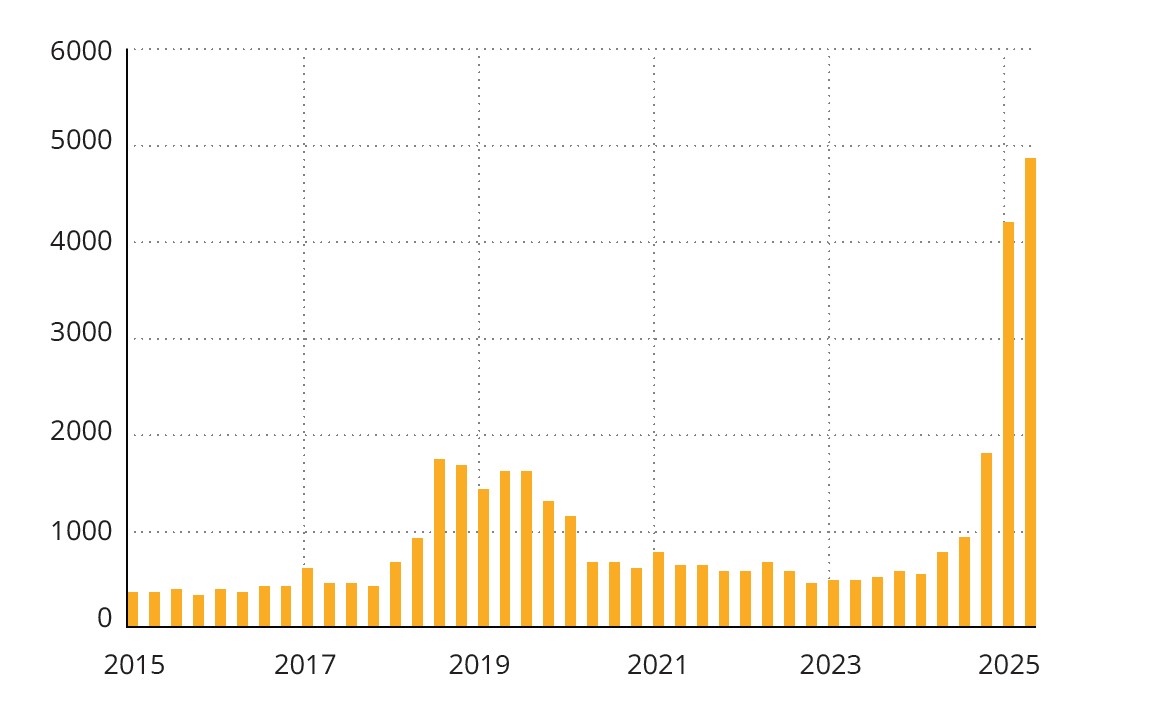
Mentions of ‘tariffs’ on US earnings calls 31 January 2015 – 9 May 2025. Source: FactSet
The Trump administration’s flurry of tariff announcements and subsequent modifications (Chart 3, on pages 3 and 4) in just a few months have caused markets to swing between alarm and relief.
Things move so fast that anything written about tariffs, at a given moment, stands the risk of being out of date in short order. A case in point was the 28 May decision by the US Court of International Trade blocking President Trump’s “Liberation Day” tariffs from taking effect, a ruling that was set aside just one day later by the US Court of Appeals, allowing the tariffs to remain in effect while the government appeals.(1)
Chart 3: Summary of Trump administration's tariff announcements, and modifications
Key tariff actions, their effective dates, and any subsequent changes or suspensions
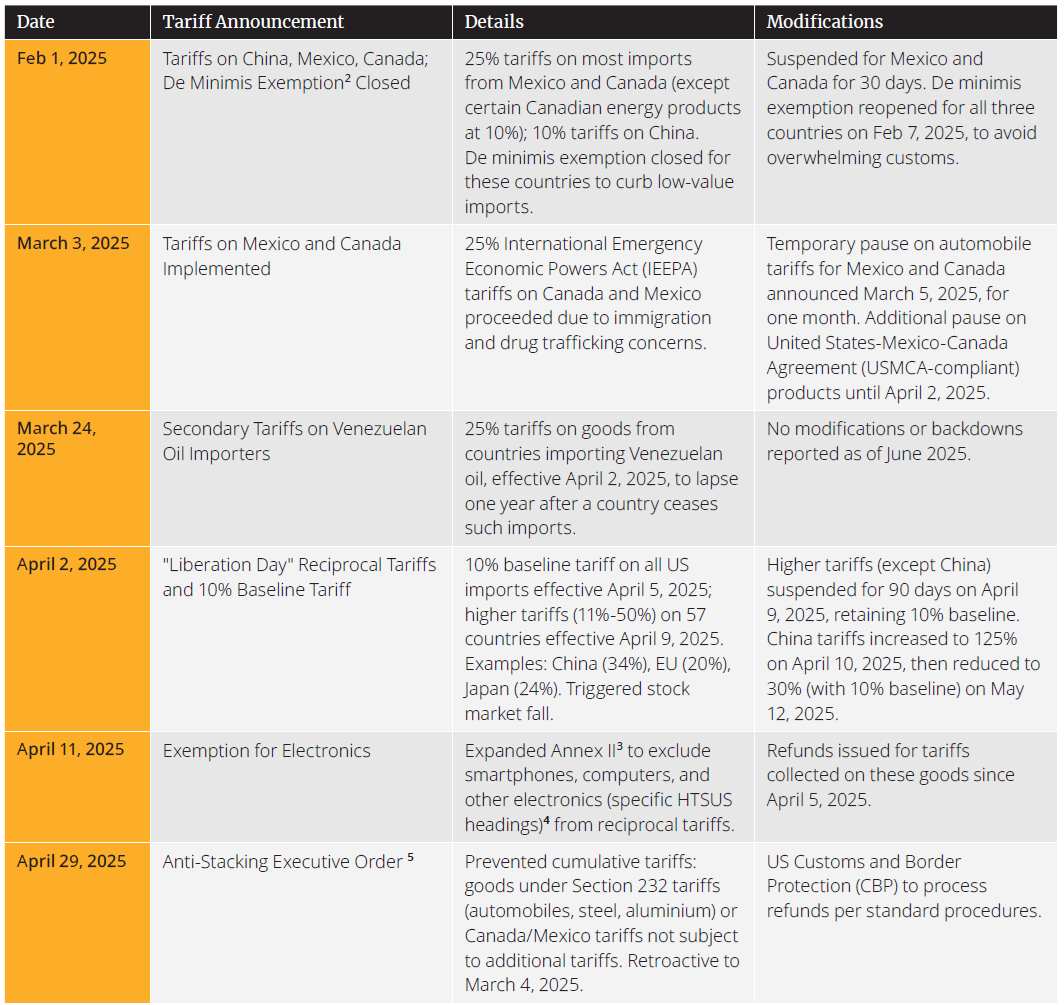
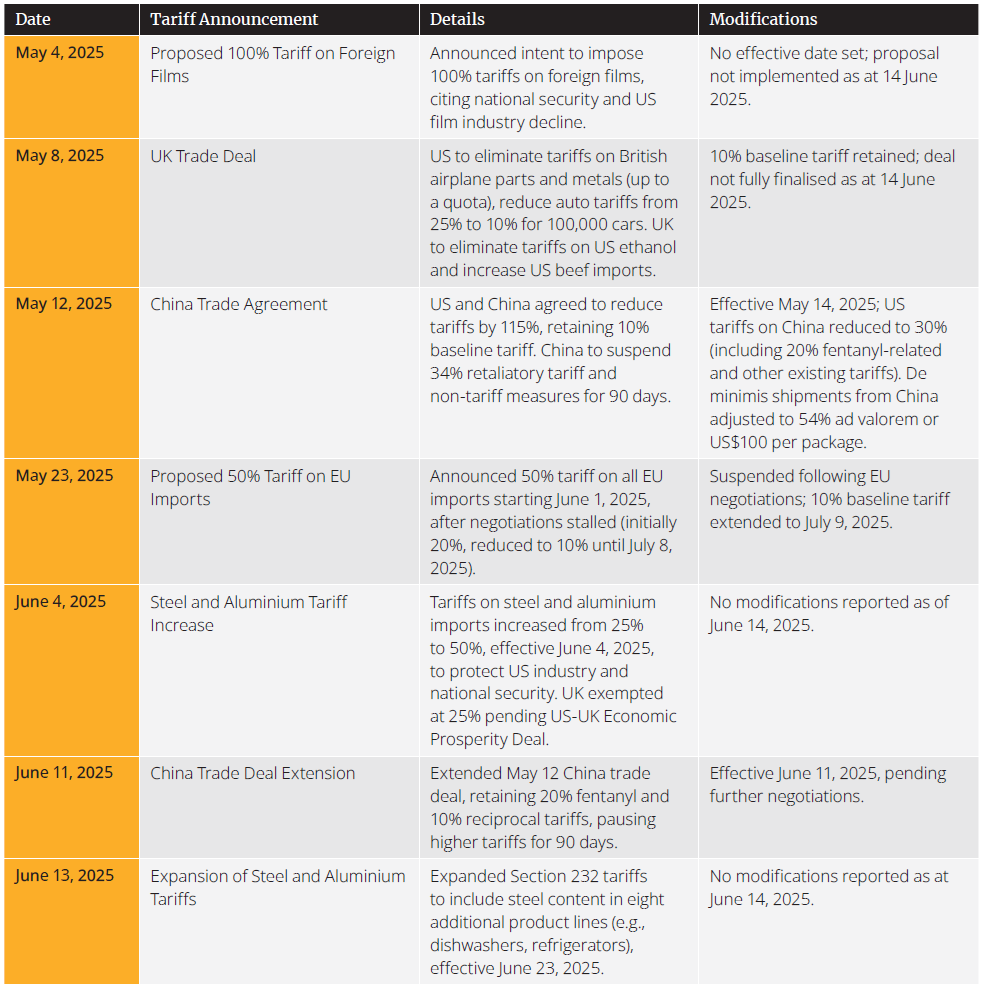
Is President Trump playing four-dimensional chess or in a cul-de-sac?
For President Trump’s supporters, modifications that have tended to follow hawkish tariff announcements (Chart 3, on pages 3 and 4) are evidence that he plays four dimensional chess while his opponents, including America’s economic competitors, play checkers. In their telling, hawkish announcements shock opponents into concessions, or at least negotiations, where the US can act from a position of strength.
Unsurprisingly, Mr Trump’s detractors see things differently and interpret conciliatory post tariff announcements as the actions of someone who finds himself in a cul-de-sac and thus compelled to retrace his steps.
It’s not unreasonable to say that President Trump is an inelegant communicator and so the rest of us must read between the lines of his remarks to discern a deeper meaning rather than manifestations of impulses.
In our view, President Trump is saying to the world that the US’ trade deficit is evidence that the country has for too long been the world’s largest consumer (and greatest borrower to finance its overconsumption), and it will no longer be the place where others send their excess production.
To correct this, as he sees it, the rest of the world must either find a way to consume more of what the US produces or pay for the privilege of accessing its vast pool of consumers and so bring about a more balanced global economy.
Achieving this without threatening global economic stability is going to be a very tall order. One encouraging sign has come from Germany where the country effectively abandoned in late 2024 the debt brake, a constitutional rule introduced in 2009 to enforce fiscal discipline, which limited the federal government's structural budget deficit to no more than 0.35% of GDP annually.(6)
Germany’s new Chancellor Friedrich Merz has been a vocal opponent of the debt brake and has made plain his desire for reviving the country’s role as a growth engine by encouraging both public and private investment.
Bond market warning
If moves out of Germany are one source of hope, the bond market has gone in the opposite direction firing a warning shot over America’s galloping indebtedness.
In late May, a US Treasury bond auction — specifically a US$16 billion 20-year bond sale — failed to attract sufficient demand, leading to a sharp rise in yields, which topped 5.1% at one stage.(7)
A snapshot of America’s fiscal situation gives reasons for creditors’ trepidation. The proposed 2025 budget has a total spending bill of US$7 trillion, against revenue of US$5.5 trillion, resulting in a budget deficit of about 6.2% of GDP.(8)
On current trends, America’s debt-to-GDP ratio is projected to surpass WWII levels by 2035, reaching 118%, driven by structural imbalances and compounding interest payments.(9) Furthermore, interest payments on debt exceed defence spending10 emphasising the magnitude of the country’s fiscal strains.
The proposed budget also contains a section which could increase taxes on US investments by non-US investors, such as superannuation and pension funds, and thus potentially reduce investment returns. This derives from Washington’s displeasure at what it deems to be unfair treatment of US firms by governments through such things as taxes on digital services provided by US companies.
At the time of writing, it looked as though the administration has chosen not to go ahead with the new tax. Nevertheless, global and Australian investors will be keeping a close eye on the issue mindful of the potential for more swings and roundabouts in American policy.
US equity market has been more sanguine
In contrast with the bond market, and notwithstanding share market ripples stemming from conflict in the Middle East, the US equity market (as measured by the S&P 500) has been less anxious as valuations are high, by historic measures, and are pushing back up to roughly where they were before tariff related worries intruded (Chart 4).
Chart 4: US Price-to-Earnings (P/E) ratio has recovered
S&P 500 index valuation (Feb 2001 – May 2025)
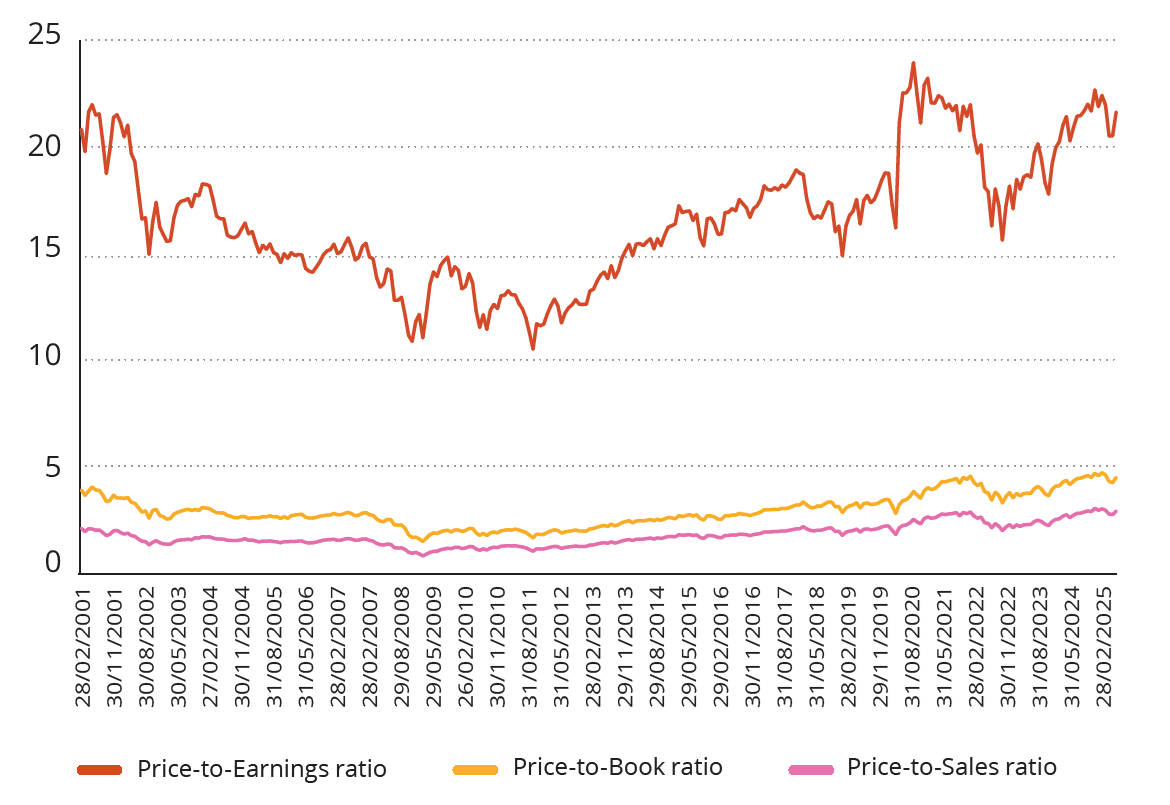
Source: FactSet
Another way of gauging US equity market optimism (arguably excessively so) is to compare the S&P 500 index’s forward price-to-book (P/B) of almost 4.0 versus the MSCI Europe’s forward P/B of 2.5 (Chart 5), representing a sizeable gap between the two indices.
Chart 5: The S&P 500 index’s forward P/B is significantly ahead of MSCI Europe’s
Forward price-to-book value (March 2005 – June 2025)
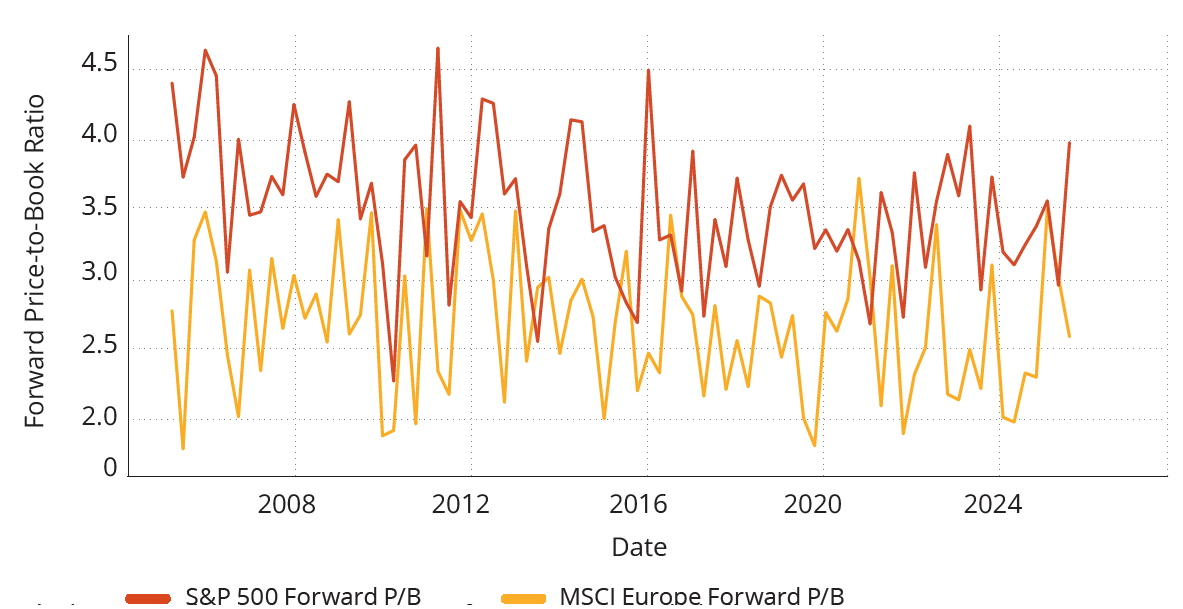
Is the bond market too pessimistic or the US equity market too optimistic? There’s a mighty debate underway.
Moreover, are non-US equities, including European equities, positioned to perform better after being overshadowed by US equities for so long?
Our Separately Managed Accounts portfolio positioning: active management that looks far, deep, and wide.
We are in the camp believing that the Trump administration’s trade reset has resulted in a firmer footing for global equities. Beyond the narrow theme of ‘magnificent’ technology and artificial intelligence companies powering returns over recent years, we see broader themes developing against a backdrop of easing interest rates, more subdued inflationary pressures, and selective fiscal stimulus. This is the basis for an increase in global shares exposure as part of our recent asset allocation refinement.
At the same time, we have trimmed our large cap Australian share exposures too as the tech-like valuations assigned to Commonwealth Bank, for instance, suggest to us that investor expectations have become a bit too high. Likewise, narrowing spreads on investment grade credits cause us to believe that valuations in this market segment may have become too rich. Profits taken from our investment grade credits have been deployed to listed global infrastructure and real estate businesses we judge as offering better value, consistent cash flows and thus more likely to deliver constructive total returns.
Underlying all our actions is our active management approach, which is anchored, in the first instance, to a long‑term strategic asset allocation. The long-term perspective is complemented with shorter-term analysis of the economic outlook and asset class return expectations. However, our investment process does not end there as we also integrate multiple scenarios of how markets and economies may progress. This means we’re not trapped into trying to guess a single correct future, but rather consider many possibilities and a far greater range of potential outcomes, and ‘contours’ if you like, of how market and macro events might play out across global investment markets.
In our view, the complexity of today’s market and geopolitical climate make it especially risky to leave portfolios on autopilot. Instead, steering portfolios with considered active management enables us to look ahead, and ideally, avoid traps and potholes, and seize opportunities.
Invest with intent
For more information on the MLC Managed Account Strategies, please visit here. If you are a financial adviser, please contact your MLC representative here. If you are a direct investor, please speak to your financial adviser.

